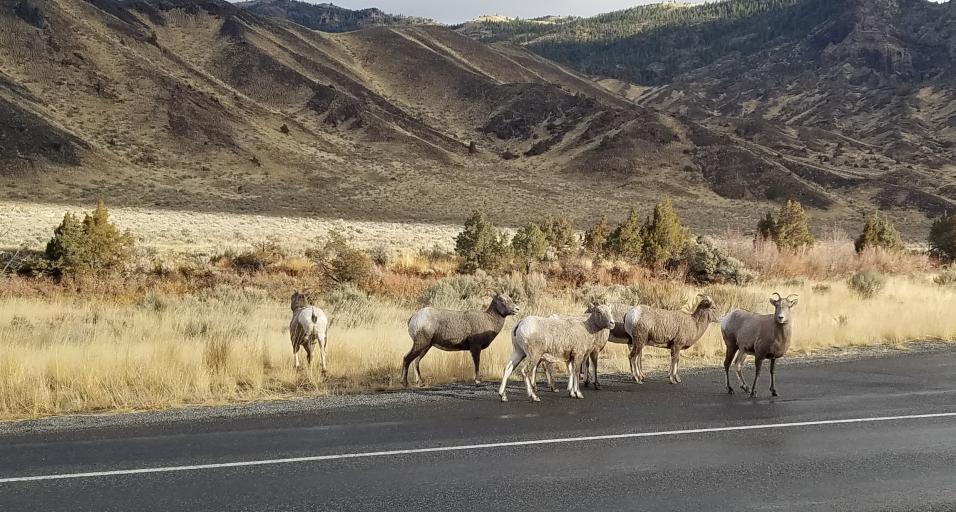The Wyoming Game and Fish Department reminds motorists traveling the North Fork (US14/16/20) and South Fork (WY 291) Highways near Cody to be cautious of wildlife on roadways during the winter months.
“The areas west and southwest of Cody are crucial winter ranges for mule deer, elk and bighorn sheep,” said Cody area Wildlife Biologist Tony Mong. “During the winter months, wildlife congregate on these ranges and can often be found on or near roadways, making them vulnerable to vehicle collisions. High numbers of these collisions and loss of wildlife can lead to negative population impacts.”
Local motorists frequenting the South Fork Highway are accustomed to the high numbers of mule deer moving along and across the highway during winter. “These deer can be especially difficult to see due to the tall sagebrush next to the road,” Mong said.
As winter sets in and seasonal recreational activities on the North Fork begin, traffic typically increases along the North Fork corridor, which can lead to an increase in collisions with bighorn sheep, mule deer or elk.
Game and Fish, Wyoming Department of Transportation, Shoshone National Forest and Sleeping Giant Ski Area are working collaboratively to raise awareness about wildlife on roadways and minimize wildlife-vehicle collisions for the safety of motorists and wildlife.
WYDOT District Engineer Pete Hallsten of Basin said all drivers should take extra precautions this time of the year to enhance safety while traveling on local highways. “Slowing down, even just five miles per hour, can greatly increase a driver’s reaction time to avoid a collision with an animal,” said Hallsten. “This is especially important at dawn and dusk, when animals are more active and harder to see.”
WYDOT plans to use variable message signs along the North Fork Highway to remind motorists of posted speed limits and the presence of wildlife.
Sleeping Giant Ski Area is also taking a proactive approach to encourage slower speeds and greater vigilance on the highway. “We know that people get excited while driving up the North Fork on their way to the mountain. Folks might be playing music loudly or amping up their little one for a day at the hill. These are the moments we all want to soak in and remember for the years to come,” said Myranda Hamel, Sleeping Giant’s communications and marketing manager. “That’s why we're encouraging our guests to be mindful of the wildlife and to #driveslowskifast. The Giant isn't going anywhere; we'll be here when you get here."
Motorists reminded to watch for wildlife on North and South Fork Highways
Tony Mong 307-527-7125



